How to use a dishwasher correctly
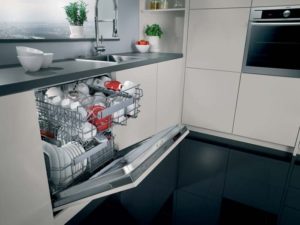 A dishwasher is a complex household appliance that is not so easy to turn on if you don’t know anything about it and are seeing it for the first time. In this case, instructions come to the rescue, but they are not always written in a language accessible to the common man. In addition, the instructions do not contain many nuances for operation. Therefore, we decided to cover the issue of how to properly use a dishwasher in detail.
A dishwasher is a complex household appliance that is not so easy to turn on if you don’t know anything about it and are seeing it for the first time. In this case, instructions come to the rescue, but they are not always written in a language accessible to the common man. In addition, the instructions do not contain many nuances for operation. Therefore, we decided to cover the issue of how to properly use a dishwasher in detail.
How to turn on the machine and set up the program
After the technician installs the dishwasher in its designated place and connects the water supply and drain, you are faced with the task of how to turn on the machine. In this case, you should not rush to load the dishwasher with dishes, because first you need to rinse them by running an idle wash without dishes. To do this you will need salt and dishwasher powder. You can also use dishwasher starter kit, if you purchased one along with the car.
You need to do the following:
- open the machine door and pull out the lower basket, under which you will see a lid covering the salt reservoir;
- unscrew the cap and pour water into the tank (this is done only once, before the first start);
- then pour salt into the water using a funnel;
- wipe away any water that has spilled into the chamber;
- close the lid of the salt container;
- adjust salt consumption on the control panel (for Bosch dishwashers) in accordance with water hardness, which must first be measured.
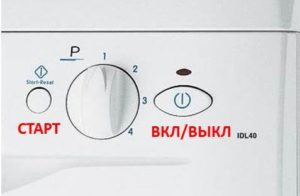
Subsequently, salt is added as needed; when the salt runs out, the salt indicator lights up on the control panel.After the salt has been added, you need to add washing powder. The powder receptacle in almost all brands of dishwashers is located on the inside of the door. Using a measuring spoon, the powder (approximately 15-20 g) is poured into the compartment and closed with a lid.
Now the car needs to be taken to the wash. To do this, make sure that the water supply tap to the dishwasher is open and the machine is plugged in. Next, on the control panel we find the machine’s power button, indicated by a circle with a vertical stick, as in the photo (on/off).
For your information! In fully built-in appliances, the control panel is located at the end of the door in the upper part; in free-standing models it is located on the facade.
Then you need to select a high-temperature wash mode, such as intensive wash. All modes have symbols, which we described in detail in the article Symbols on the dishwasher. The choice on different models of Bosch, Electrolux, Ariston dishwashers is made differently. In mechanically controlled dishwashers, you need to turn the knob to the appropriate program; there are few such machines left. In machines with electronic and touch controls, selection is made by pressing buttons. Each program and function can have a separate button, which is often found in Bosch dishwashers.
And it’s also possible when there is one button to cycle through all the programs, for example in touch-sensitive models of Electrolux dishwashers. Having selected a program in the machine, you need to press the Start button, which will start the washing cycle. This will start the idle wash.
Further starting of the machine is carried out in the same way.But in addition to the powder, you will also need to pour in rinse aid, the compartment for which is located next to the powder compartment. Just like for salt, you need to set the rinse aid consumption. To begin with, you can set the average value, and then, as you use it, change the value to a higher or lower value, depending on the washing result. If streaks and drops remain, then increase the consumption; if a rainbow film appears or the rinse aid is poorly washed off, then reduce its consumption.
Loading the dishes
Having understood how dishwashing programs are set up and activated, you need to figure out how to arrange dishes in baskets. This can be done in different ways, but the result may not be happy, the dishes will not be washed well, and you will be disappointed in the “helper”. In the instructions for an Electrolux, Ariston or other car, you will probably find an arrangement guide, and even with pictures.
Given the standard cookware that manufacturers rely on, everything is more or less clear. But most often, the dishes of most users do not correspond to the standard ones.
Do not forget! Before loading the dishwasher into the machine, clean the dishes from food residues; it is not necessary to rinse them, but brush off any pieces of food, napkins, bones, etc. with a brush. don't be lazy.
Here are the basic rules for loading a dishwasher:
- First load the lower basket with large items (large plates, pots, pans), then the upper one;
- place the plates in the holders, leaving a small gap between the plates, otherwise they will not be washed, especially deep tureens;

- the dishes are placed with the inside facing the center, large plates should be placed in the outer compartments of the basket, and small ones in the center;
- pans and baking sheets are placed sideways so as not to block the water supply to the upper basket, and it is better to wash pots by turning them upside down;
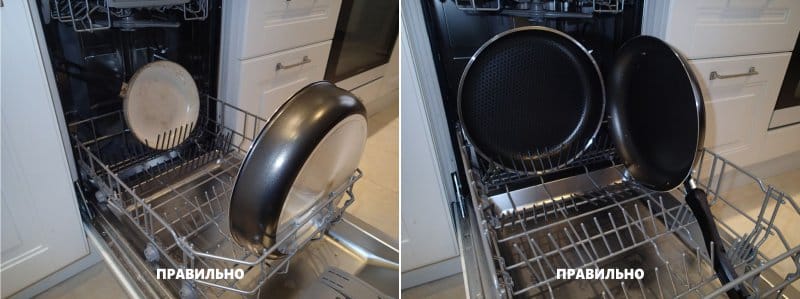
- It is best to wash pans and pots separately from plates and glasses;
- Do not overload the dishwasher with dishes, because this will not wash anything;
- glasses, wine glasses, cups, plastic containers and other small items are placed upside down in the upper basket;

- for cutlery there is a separate basket or pull-out tray at the top of the dishwasher; ladles, skimmers, spatulas are placed horizontally in the upper basket;
- The dishes should not interfere with the free rotation of the spray arms and the opening of the powder receptacle on the door.
When arranging dishes, you need to take into account the fact that not all items can be washed in the dishwasher.
A complete list of what should not be loaded into the car is in the article What dishes should not be washed in the dishwasher??
Choosing a detergent
Choosing a detergent is one of the difficult tasks for users, because with such an assortment on the market, it is difficult to give preference to any one manufacturer. Here, it is indeed very difficult to give advice on whether it is better to wash with gel, powder or tablets. Everything will depend on your financial capabilities. All of these means have their pros and cons.
For example, easy-to-use combination tablets are very expensive. Powder is cheaper, but it is inconvenient to pour. Our opinion, we do not impose it, it is better to use all products separately, this is powder or gel, salt and rinse aid. Let's explain why:
- firstly, it will be cheaper, do the math yourself;

- secondly, you will dose the products yourself, depending on the soiling of the dishes and the amount of them in the dishwasher, over time you will automatically pour in the required amount of powder, but the tablets have the same dosage, so sometimes you have to divide it in half (for compact dishwashers). The same applies to the dosage of rinse aid;
- Thirdly, powder and gel dissolve much faster, for this reason tablets are not recommended for use on short cycles;
- fourthly, your ion exchanger will not “suffer” from a lack of salt. There is a certain amount of salt in the tablet, which is not enough for very hard water, and therefore the salt will have to be poured separately, and this is an additional waste; it is impossible not to sprinkle salt, since the dishwasher may even break down.
Think for yourself which brand to choose Finish, Amway, Somat, we will only advise you to read the review safe dishwashing detergents.
Choosing the right mode
Having laid out the dishes and prepared the machine, we move on to choosing a program and starting it. This is also an important step in the efficient operation of the dishwasher. The dishwashing mode should be selected depending on the degree of contamination and the material used to make the dishes themselves. Let's look at the main modes that most cars are equipped with.
- Standard (main) program - suitable for washing various dishes with medium degree of soiling, carried out by heating the water to 50-600WITH.
- Economical program (Eco) – also runs when heated to 500C, but saves water and electricity. You can wash lightly soiled dishes of various types.
- The intensive program is designed for washing very dirty dishes, for example, frying pans, pots, plates with dried food. The water heats up to 700WITH.
- The delicate program is designed for washing crystal, glass, plastic and other fragile dishes.
For your information! As for the washing time, it may vary from dishwasher to dishwasher. Washing time can vary from 45 minutes to 3.5 hours.
- An automatic program that selects the temperature and other washing parameters depending on how dirty the dishes are.
In addition to modes, do not forget about useful functions. A half load allows you to wash dishes without accumulating them, and the pre-rinse function, on the contrary, will help to better wash dishes that have been lying in the machine for a long time, as well as those with burnt food. The Hygiene+ function is useful for disinfecting baby bottles, jars and cutting boards.
What to do after washing is complete
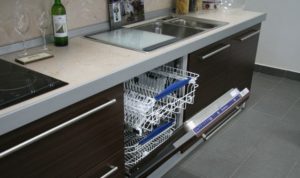 After washing the dishes and drying them, it is necessary to maintain the dishwasher. You should not treat this with disdain, especially since it will take no more than 10 minutes. Otherwise, everything may result in a lengthy repair.
After washing the dishes and drying them, it is necessary to maintain the dishwasher. You should not treat this with disdain, especially since it will take no more than 10 minutes. Otherwise, everything may result in a lengthy repair.
After turning off the dishwasher and removing the dishes from the baskets, you need to remove the baskets and remove the mesh filters from the bottom of the chamber. Then rinse them under the tap and put them back in place. Next, you need to wipe the walls of the washing chamber with a dry cloth; if there are any stuck pieces of food under the door or rubber band, remove everything. You can leave the car door open for a while to dry, so that moisture does not create an unpleasant odor.
These simple steps will keep your dishwasher clean.Once or twice every six months you need to clean the dishwasher with a grease and scale remover. This will allow you to wash not only the dishwasher chamber, but also the hoses and pipes from plaque and other contaminants.
Safety Tips
In conclusion, I would like to devote a few words to safety and dwell on precautionary measures:
- It is not recommended to touch the dishwasher with your hands during operation;
- The machine must be connected to a grounded outlet;
- To protect your machine from unexpected power surges, connect it to the outlet via Voltage regulator;
- after the end of the washing cycle, do not rush to take out the dishes, they are very hot;
- when reloading dishes while the machine is running, wait until the rocker arms stop;
In the event of a breakdown, do not panic, unplug the equipment and carefully inspect it; do not attempt to repair it yourself; if you are not confident in your abilities, contact a specialist.
- Keep children away from the operating dishwasher and do not allow them to press the buttons.
We hope that now you know how to use a dishwasher, no matter what brand it is, Electrolux or Bosch. In addition, you can watch a video on how to handle your dishwasher correctly. Remember: constant adherence to operating rules will extend its service life, delighting you with clean dishes.
Interesting:
1 reader comment
Add a comment Cancel reply
Categories
Washing machine repair


For buyers

For users

Dishwasher




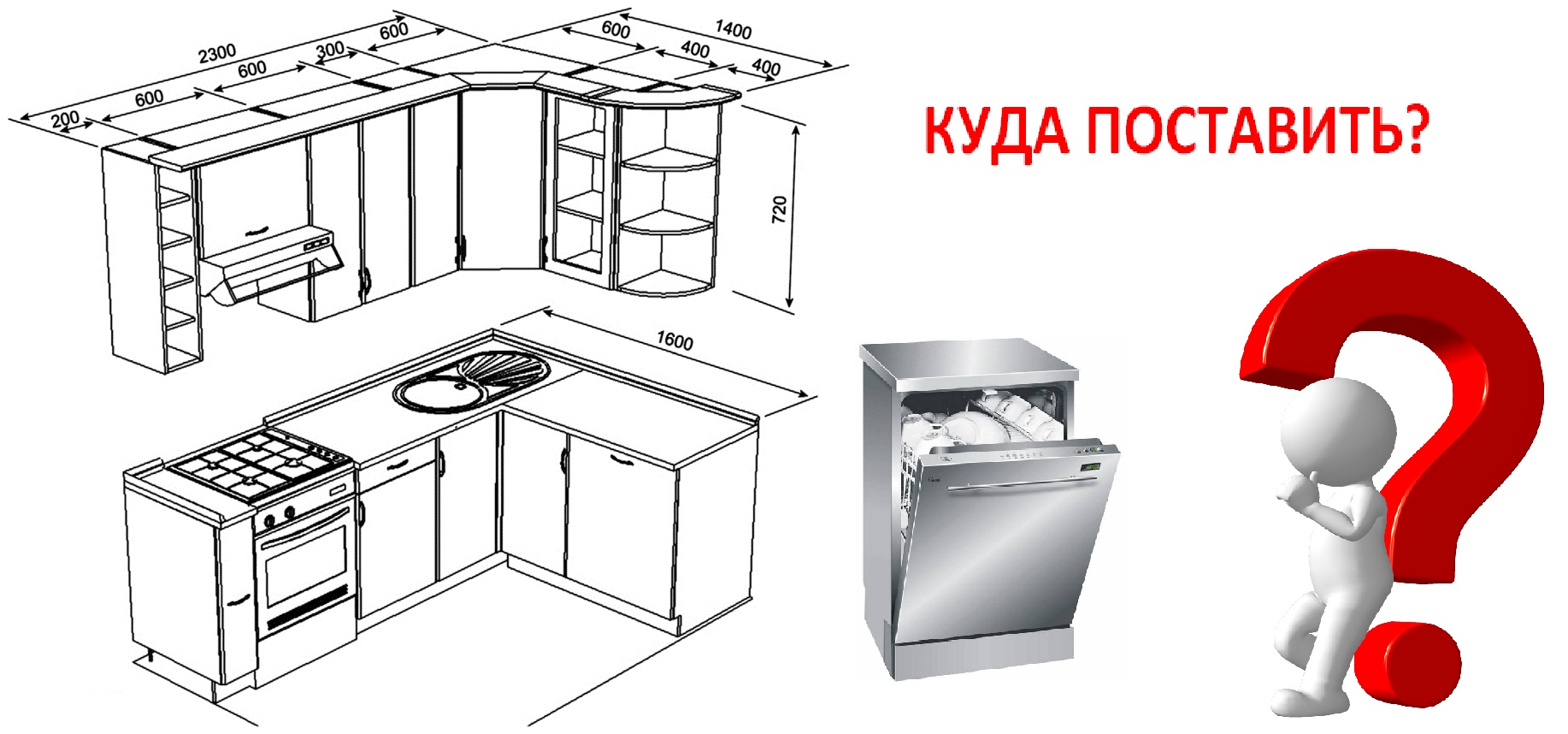
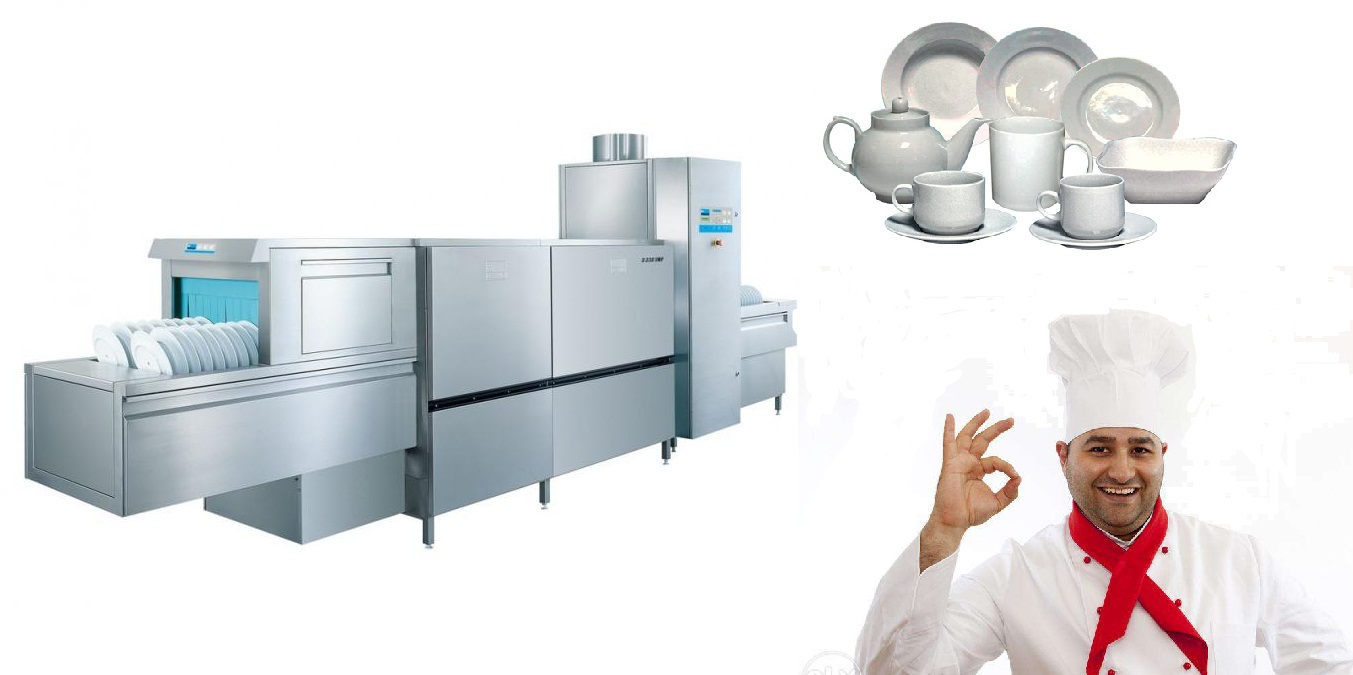











Very useful article.True, I made mistakes first, and then I read it all.